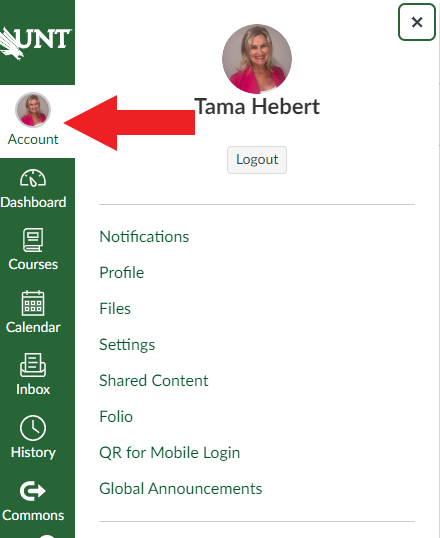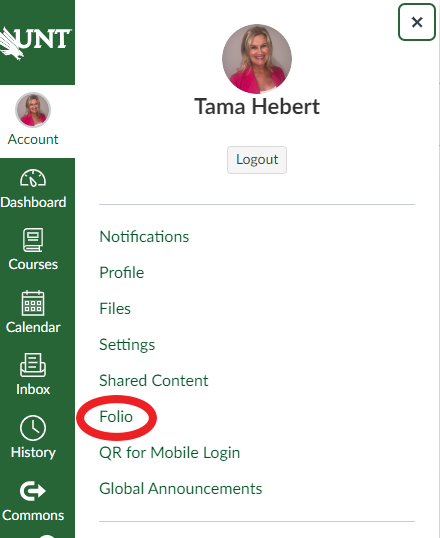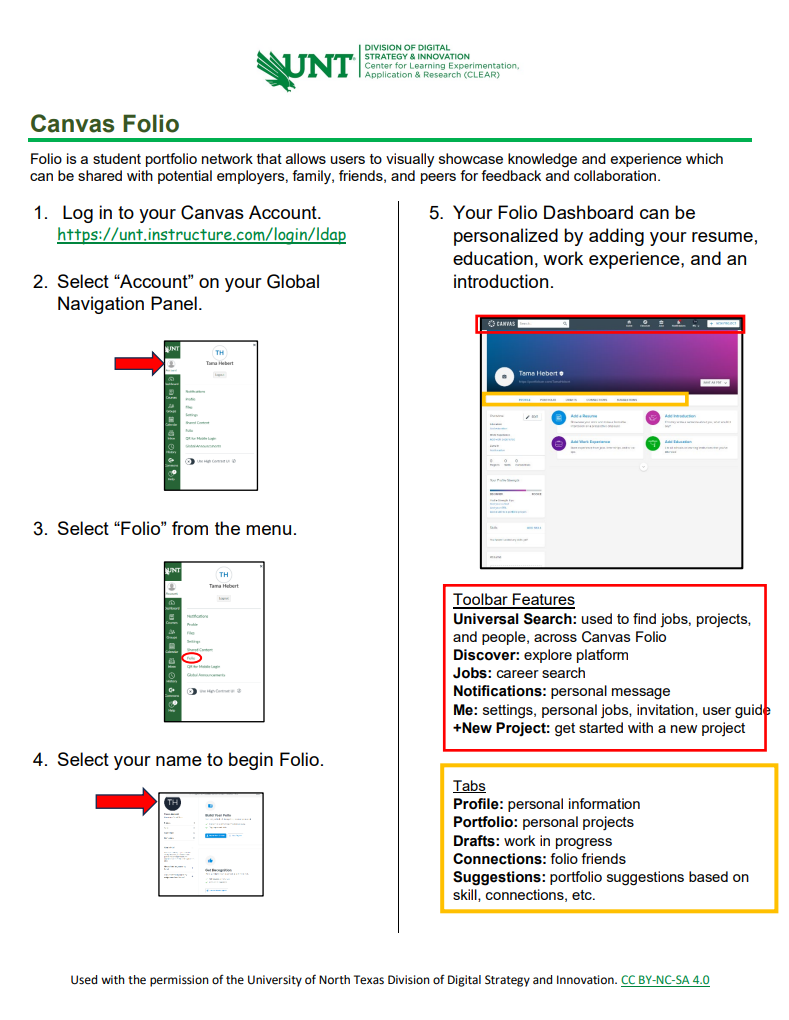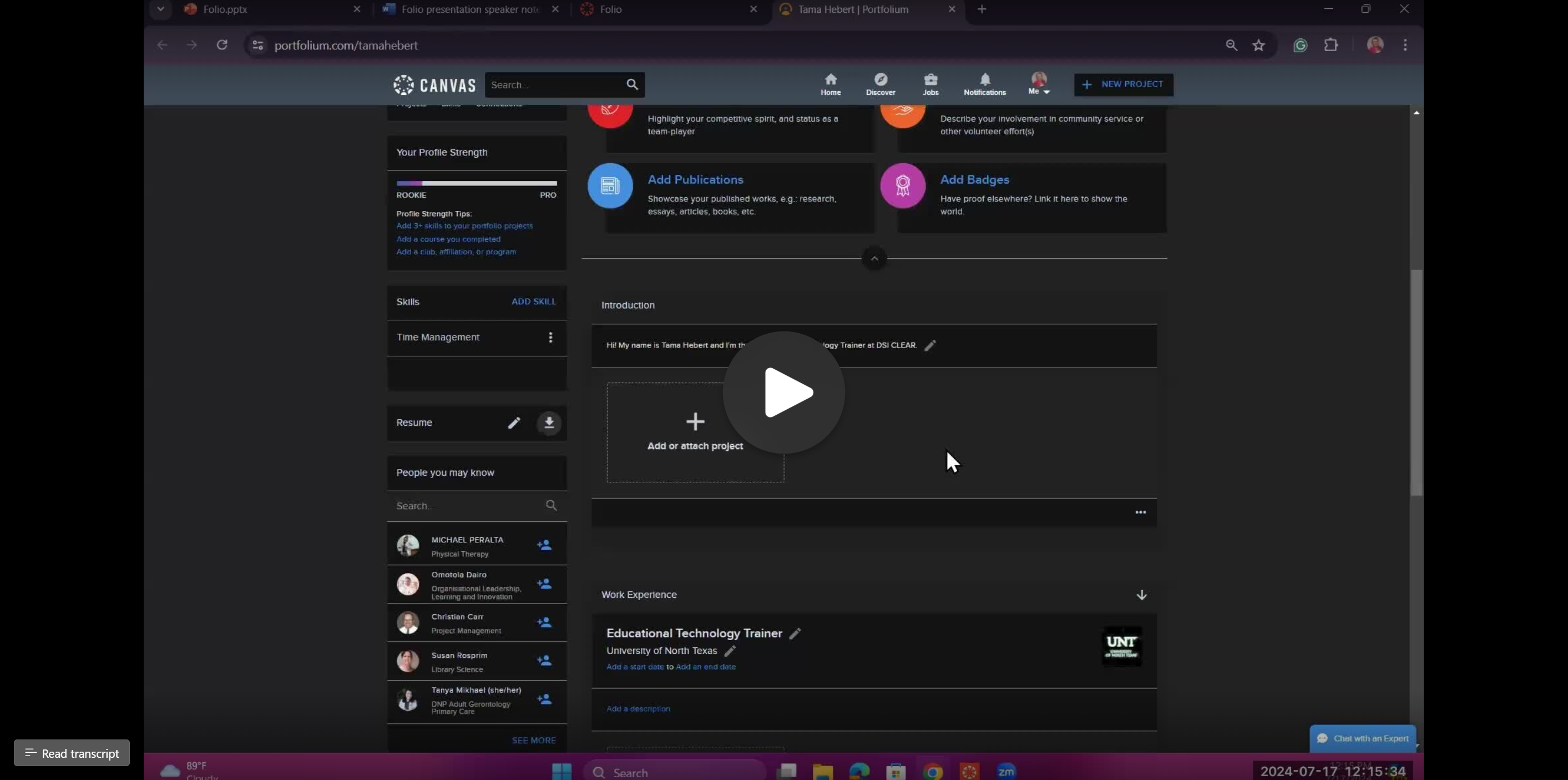- DSI CLEAR
- Teaching Resources
- Theory & Practice
- Methods for Continuous Improvement
- Using AI in the Higher Education Classroom
- Invisible Labor and Faculty Retention Since COVID-19
- Inclusive Discussions
- Inclusive Assessment
- Designing Assessments for Academic Integrity
- Inclusive Instructional Strategies
- Instructor Presence in the Online Classroom
- Tips for Providing Personalized Feedback to Students
- Course Design for Student Retention
- UNT's CLAW 3 Active Learning Classroom Instructional Guide
- UNT Faculty Teaching & Learning Resource Guide
- Growth Mindset in the Higher Education Classroom
- Course Outcomes & Objectives
- Multimedia Course Design for Student Engagement and Retention
- Level Up Learning With Portfolios
- Group Work in Higher Education: Benefits & Practices for Success
- Open Educational Resources & Copyright Essentials for Instructors
- Evaluating OER Resources
- Accessibility Online
- Copyright Guide
- Online Teaching
- UNT Syllabus Template
- Teaching Consultation Request
- Open Educational Resources & Copyright Essentials for Instructors
- Evaluating OER Resources
Level Up Learning with Portfolios

Portfolios are intentional collections of works by a learner that evidence their progress, performance, and reflection. Portfolios are viewed as a “purposeful generalization and reflection of work, effort and progress” (Syzdykova et al. 2021).
Since its implementation during the 1990s, portfolio usage has increased tremendously (Zhang and Tur, 2022). In the era of rapid technological innovation, digital portfolios have become a popular alternative to physical ones, significantly enhancing functions, capability and portability.
The increased attention of federal agencies and accrediting bodies towards assessment and accountability is also credited with propelling portfolio usage. Higher education institutions around the nation have adopted portfolios to satisfy assessment procedures (Eynon & Gambino, 2023).
Studies have shown that the use of e-portfolios in teaching, learning and assessment has increased in prominence. If implemented successfully, e-portfolios offer promising benefits (Zhang and Tur, 2022).
Benefits of Portfolios for Students
In higher education, the portfolio is recognized as a tool for assessment and demonstration of the construction of knowledge (Marinho et al., 2021). It is also credited with helping develop students’ capacity to reflect on their work, learning and autonomy.
A study found that e-portfolios enhanced students’ reflective, cognitive, and metacognitive skills (Ebil et al., 2020). For instance, students at Harvard’s Graduate School of Education created real work products and displayed them as part of their learning-oriented assessment. This helped them learn more about themselves and build strong mental models through reflection (Syzdykova et al., 2021).
E-portfolios also allow students to heuristically interpret and react to outcomes, which is integral to self-assessment (Cambridge et al. 2023). The process of creating an e-portfolio requires synthesis of ideas, self-awareness, planning, reflection of achievements and other benefits, providing avenues to demonstrate the learning journey with creative multimedia usage (Walland & Shaw, 2022).
Portfolios also provide opportunities for students to represent growth outside traditional academic systems since it is also shared with potential employers relevant to students’ goals. E-portfolios' flexibility and adaptability also mean that they can be incorporated easily into professional networking platforms as a tool for job search and self-promotion (Syzdykova et al., 2021). Studies show that employers recognize the utility of e-portfolios and that nearly half (44%) employers are much more likely to hire candidates with a portfolio of work that showcases their skills and integrates their college experiences (Finley, 2021).
Benefits of Portfolios for Faculty
The benefits of portfolios also extend to faculty and the institution. The use of e-portfolios in classroom settings empowers faculty to be assessment capable and technologically skilled. The application of e-portfolios may also promote reflective teaching practices while enabling them to master new forms of technology, pedagogy and subject content (Lam, 2023).
Studies show that operational feasibility of e-portfolios might also depend on instructor input, students’ motivation, type of software chosen, and connectivity setting (Ebil et al., 2020). In the case of student teachers, working with portfolios is also likely to improve their reflective writing skills (Feder & Cramer. 2023).
If conducted well, e-portfolio practice can even catalyze learning-centered institutional change (Eynon & Gambino, 2023). E-portfolios also allow means to measure mission and outcomes, providing faculty and the institution the means to evaluate. (Cambridge et al. 2023).
Folio
Canvas now features Folio, a versatile and effective digital portfolio tool. Folio enables students to document, reflect on, and showcase their learning experiences, skills, and achievements. This free tool visually highlights students’ academic and professional accomplishments within the Portfolium Network.
- Folio is now embedded in Canvas for the UNT community and can be accessed by selecting “Account” on your global navigation panel.

- Select “Folio” from the menu.

- Select your name to begin Folio.

*For additional details, please refer to the Tip Sheet and Training Recording available in the panel on the right side of this screen.
Conclusion
Portfolios are pivotal and versatile tools that help unlock pedagogical and career benefits (Syzdykova et al., 2021). In higher education, portfolios are often used to encourage self-reflective autonomous learning and to document skills pivotal to employment (Walland & Shaw, 2022). Considering its evaluative, reflective and employability benefits, students, faculty and higher institutions might consider incorporating it into their higher education trajectories and beyond.
References
Cambridge, D., Yancey, K. B., & Cambridge, B. (Eds.). (2023). Electronic portfolios 2.0: Emergent research on implementation and impact. Taylor & Francis.
Eynon, B., & Gambino, L. M. (2023). High-impact ePortfolio practice: A catalyst for student, faculty, and institutional learning. Taylor & Francis.
Feder, L., & Cramer, C. (2023). Research on portfolios in teacher education: A systematic review. European Journal of Teacher Education, 1-18.
Finley, A. (2021). How College Contributes" to" Workforce Success: Employer Views on What Matters Most. Association of American Colleges and Universities.
Hj. Ebil, S., Salleh, S. M., & Shahrill, M. (2020). The use of E-portfolio for self-reflection to promote learning: A case of TVET students. Education and Information Technologies, 25(6), 5797-5814.
Lam, R. (2023). E-Portfolios: What we know, what we don’t, and what we need to know. RELC Journal, 54(1), 208-215.
Marinho, P., Fernandes, P., & Pimentel, F. (2021). The digital portfolio as an assessment strategy for learning in higher education. Distance Education, 42(2), 253-267.
Syzdykova, Z., Koblandin, K., Mikhaylova, N., & Akinina, O. (2021). Assessment of E-portfolio in higher education. International Journal of Emerging Technologies in Learning (Online), 16(2), 120.
Walland, E., & Shaw, S. (2022). E-portfolios in teaching, learning and assessment: tensions in theory and praxis. Technology, Pedagogy and Education, 31(3), 363-379.
Zhang, P., & Tur, G. (2022). Educational e-Portfolio Overview: Aspiring for the Future by Building on the Past. IAFOR Journal of Education, 10(3), 51-74.


